
GeroScience
Scope & Guideline
Pioneering Discoveries in Geriatric Health
Introduction
Aims and Scopes
- Mechanisms of Aging:
This journal explores the cellular and molecular mechanisms that contribute to aging, including oxidative stress, cellular senescence, and changes in mitochondrial function. - Aging and Disease Correlation:
It investigates the relationship between aging and various diseases, particularly neurodegenerative disorders, cardiovascular diseases, and metabolic syndromes. - Interventions for Healthy Aging:
The journal publishes studies on interventions aimed at promoting healthy aging, including pharmacological treatments, dietary modifications, and lifestyle changes. - Biomarkers of Aging:
Research on identifying and validating biomarkers that indicate biological age, frailty, and the risk of age-related diseases is a key focus. - Translational Research:
GeroScience emphasizes translational studies that bridge laboratory findings with clinical applications to improve health outcomes in aging populations. - Animal Models of Aging:
Utilizing animal models, including mice, dogs, and non-human primates, to study aging processes and test potential therapeutic interventions is a significant aspect of the journal's research.
Trending and Emerging
- Interdisciplinary Approaches to Aging:
There is a growing trend towards integrating insights from various disciplines, including genetics, neuroscience, and social sciences, to create a more comprehensive understanding of aging. - Focus on Frailty and Functional Decline:
Research increasingly centers on frailty as a crucial indicator of health status in older adults, emphasizing the need for interventions that enhance functional capacity and quality of life. - Microbiome and Aging:
Studies exploring the relationship between the gut microbiome and aging are gaining prominence, highlighting the microbiome's role in healthspan and disease susceptibility. - Innovative Therapeutics and Senolytics:
There is a trend towards investigating novel therapeutics, particularly senolytics, which target cellular senescence to mitigate age-related health decline. - Personalized Medicine in Aging:
The emergence of personalized and precision medicine approaches tailored to individual aging profiles and genetic backgrounds is becoming a significant focus. - Neuroinflammation and Cognitive Aging:
Research on the role of neuroinflammation in cognitive decline and neurodegenerative diseases is increasingly prevalent, reflecting an understanding of the complex interplay between aging and brain health.
Declining or Waning
- Traditional Anti-Aging Therapies:
Research focusing on traditional anti-aging therapies, such as hormone replacement or simple dietary supplements, has seen a decline as more nuanced and mechanistic approaches gain traction. - Single-Factor Studies:
There is a noticeable decrease in studies that examine a single factor in isolation without considering the complex interactions involved in aging and health. - Epidemiological Studies without Mechanistic Insights:
While epidemiological studies are important, there is a waning interest in those that do not link findings to underlying biological mechanisms or therapeutic implications. - Animal Models with Limited Relevance to Humans:
Research utilizing animal models that do not effectively translate to human aging processes or health outcomes is becoming less common. - Emerging Technologies in Isolation:
The focus on emerging technologies such as artificial intelligence or big data analytics without integrating them into broader aging research frameworks is declining.
Similar Journals

Cell Stress
Illuminating the Pathways of Stress in CellsCell Stress is a prestigious, peer-reviewed open access journal dedicated to advancing research in the fields of biochemistry, genetics, molecular biology, cancer research, and physiology. Published by SHARED SCIENCE PUBLISHERS OG in Austria, this journal has rapidly established itself since its inception in 2017, achieving Q1 status in multiple categories, indicative of its high impact and quality. With an impressive Scopus ranking—holding a top percentile position in its respective fields—Cell Stress aims to foster interdisciplinary collaboration and disseminate cutting-edge findings that enhance our understanding of cellular stress mechanisms and their implications in health and disease. The journal's commitment to open access since its launch ensures that critical research is accessible to a global audience, thereby facilitating the exchange of knowledge among researchers, professionals, and students alike. Address your submissions or inquiries to AM BLUMENHAG 25-4, Graz 8010, Austria, and contribute to this dynamic platform that is shaping the future of molecular medicine.
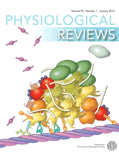
Physiological Reviews
Fostering Excellence in Physiological Research and AnalysisPhysiological Reviews is a prestigious journal published by the American Physiological Society, dedicated to advancing our understanding of physiology across various domains. With an impressive impact factor that places it in Q1 quartiles for medicine, molecular biology, and physiology as of 2023, this journal is recognized as a leading source of high-quality reviews and research analyses. The journal has been a vital resource for the scientific community since its inception in 1945, providing in-depth and comprehensive insights that are crucial for both scholars and practitioners in the field. Although not an open-access publication, it remains widely accessible through institutional subscriptions, ensuring that crucial research findings are disseminated efficiently. With Scopus rankings that place it in the top percentile across multiple categories, Physiological Reviews continues to be an essential platform for the latest advancements and discoveries in physiology, making it indispensable for researchers, professionals, and students alike.
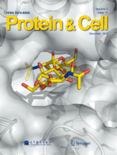
Protein & Cell
Shaping the Future of Scientific Collaboration and DiscussionProtein & Cell, published by Oxford University Press, is a distinguished international journal focusing on cutting-edge research in the fields of biochemistry, biotechnology, cell biology, and drug discovery. This open access journal, active since 2014, is dedicated to disseminating innovative findings that advance our understanding of protein functions and cellular processes, making it an essential resource for researchers, professionals, and students alike. With an impressive 2023 impact factor reflected in its Q1 ranking across multiple categories such as Biochemistry, Drug Discovery, and Cell Biology, 'Protein & Cell' stands at the forefront of scientific research, driving collaboration and discussion in the scientific community. Researchers can access the journal freely online, fostering a global exchange of knowledge and contributing to significant advancements in medicine and biotechnology. Located in the United Kingdom, the journal strives to be a pivotal platform for impactful research that influences future studies and applications.

Aging Medicine
Pioneering Research in Gerontology and GeriatricsAging Medicine, published by Wiley, is a pivotal open-access journal that has been at the forefront of research dedicated to the aging population since its inception in 2018. With a focus on both geriatric care and gerontology, the journal serves as a crucial resource for researchers, healthcare professionals, and students interested in understanding the complexities of aging and the related medical challenges. Although it holds a Q3 quartile ranking in the fields of Aging and Geriatrics and Gerontology according to the 2023 metrics, the journal continues to effectively disseminate valuable research and insights, helping to bridge gaps in knowledge and practice. With an E-ISSN of 2475-0360, it offers an open-access model that ensures broader accessibility to its published content, thus promoting collaboration and innovation across disciplines. As the journal converges towards 2024, it remains committed to evolving with the dynamics of aging research, making it a significant platform for the exchange of ideas and advancements in this essential field.

Aging-US
Bridging Science and Health in Aging StudiesAging-US is a premier peer-reviewed journal dedicated to advancing the field of aging research and cell biology. Published by IMPACT JOURNALS LLC, this journal serves as a vital resource for researchers and professionals exploring the biological mechanisms of aging and their implications for health and disease. With a commendable impact factor reflected in its 2023 Scopus rankings, where it stands at Rank #10/38 in the category of Aging and Rank #63/285 in Cell Biology, Aging-US exemplifies rigorous scientific excellence. Its open access policy enhances accessibility, fostering a wider dissemination of knowledge in both academic and clinical settings. Spanning from 2009 to 2024, the journal provides a platform for groundbreaking studies and innovative methodologies, ensuring that it remains at the forefront of the dynamic conversations surrounding aging and cellular biology. Engage with Aging-US to contribute to the evolving narratives of longevity and cellular health.

Journal of Inflammation Research
Advancing the Science of Inflammation and ImmunityJournal of Inflammation Research, published by Dove Medical Press Ltd, is a premier open-access journal dedicated to advancing the field of immunology and allergy, with a particular focus on the biological mechanisms underlying inflammation. Since its inception in 2008, this journal has provided a vital platform for researchers to share their findings and foster collaboration within the global scientific community. With an impressive 2023 impact factor placing it in the Q2 category for both Immunology and Immunology and Allergy, the journal has consistently maintained its relevance and high academic standards, ranking #100 in Medicine (Immunology and Allergy) and #118 in Immunology (Immunology and Microbiology) according to Scopus metrics. The E-ISSN 1178-7031 allows for easy access to a plethora of pioneering research articles, reviews, and clinical studies that address contemporary issues in inflammation and immunity. As a leading resource for researchers, professionals, and students alike, Journal of Inflammation Research is committed to facilitating the dissemination of groundbreaking discoveries that contribute to improved therapeutic strategies and health outcomes.
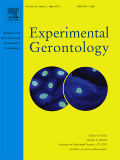
EXPERIMENTAL GERONTOLOGY
Exploring Interdisciplinary Approaches to Enhance HealthspanEXPERIMENTAL GERONTOLOGY is a prestigious journal published by PERGAMON-ELSEVIER SCIENCE LTD, dedicated to the evolving field of aging research. With a rich history dating back to 1964 and continuing through 2024, this journal aims to advance the understanding of the biological processes underlying aging and develop interdisciplinary approaches to improve healthspan. ENCOMPASSING a broad scope, including *biochemistry*, *cell biology*, *endocrinology*, *genetics*, and *molecular biology*, it holds impressive rankings in the 2023 Scopus Ranks, featuring in Q1 and Q2 quartiles across multiple categories. This positions it as a vital resource for researchers and professionals focused on gerontology and related fields. As a subscription-based journal without open access, EXPERIMENTAL GERONTOLOGY ensures the dissemination of high-quality research through rigorous peer review, making it an essential publication for those aspiring to remain at the forefront of aging studies.
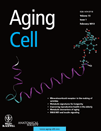
AGING CELL
Transforming Understanding of Aging Through Open AccessAGING CELL is a premier peer-reviewed journal published by Wiley, specializing in the rapidly evolving field of aging research and cell biology. Established in 2002 and enjoying an impressive track record as evidenced by its Q1 ranking in both Aging and Cell Biology categories for 2023, the journal has become a vital resource for researchers and professionals alike. With a significant impact factor highlighting its scholarly influence, AGING CELL offers an open access model since 2014, ensuring that groundbreaking research is accessible to the global community. The journal covers a wide array of topics related to the mechanisms of aging at the cellular and molecular levels, making it essential reading for anyone invested in understanding the complexities of aging processes and their implications for health and disease. With a broad international readership based in the United Kingdom and beyond, AGING CELL is dedicated to disseminating high-quality research that impacts scientific understanding and fosters advances in the field.

Frontiers in Aging
Transforming Understanding of LongevityFrontiers in Aging is a leading academic journal published by FRONTIERS MEDIA SA, dedicated to advancing the understanding of the biological processes associated with aging. Established in 2020, this open-access journal aims to bridge the gap between various disciplines including genetics, molecular biology, and physiology, providing a multidisciplinary platform for researchers and clinicians alike. With a notable impact factor denoted by its Q2 quartile rankings in Aging, Genetics, and Molecular Biology, and a Q1 ranking in Physiology as of 2023, the journal is recognized for its contribution to the scientific community. Located in Lausanne, Switzerland, it is committed to promoting open discourse and publishing cutting-edge studies that address the complexities of aging and its implications for health and longevity. The journal’s editorial board, consisting of leading experts, ensures the rigorous peer-review process, maintaining high academic standards and fostering innovation in aging research.
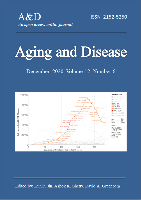
Aging and Disease
Advancing knowledge on aging and its complexities.Aging and Disease is a leading open-access journal published by the International Society on Aging and Disease, dedicated to advancing the understanding of aging and its associated diseases. Since its inception in 2010, the journal has established itself as a vital resource for researchers and practitioners in the fields of Geriatrics, Neurology, Cell Biology, and Pathology. With an impressive Q1 ranking across multiple categories and a robust position in Scopus rankings, including ranks in the top 3% in Geriatrics and Gerontology, it showcases high-quality research that addresses the complexities of aging processes. Each issue presents original articles, reviews, and insights aimed at improving health outcomes for the aging population. The open-access model ensures that valuable research findings are readily available to a global audience, fostering collaboration and innovation. As a go-to publication for scholars, healthcare professionals, and students, Aging and Disease significantly contributes to the multidisciplinary dialogue surrounding aging and its health implications.